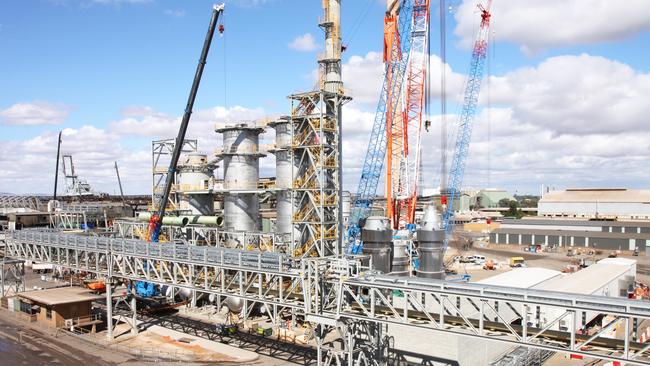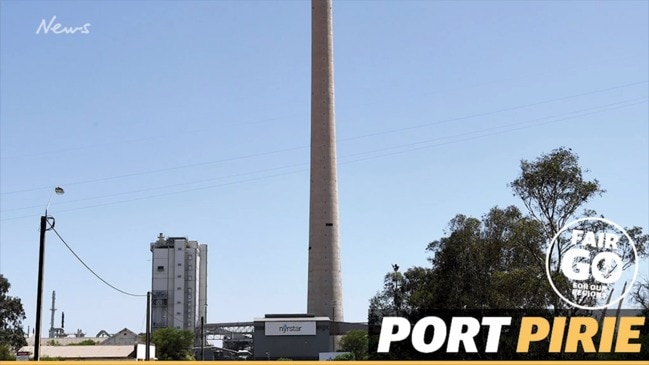Study finds half of Pirie children have dangerous lead in blood level
About half of young children in Port Pirie have dangerous levels of lead in their blood, a study has found.

SA Business
Don't miss out on the headlines from SA Business. Followed categories will be added to My News.
- Soaring rise in lead levels in Port Pirie children
- Smelter upgrade leads to rise in lead emissions at Port Pirie
- Nyrstar at risk of defaulting on debt guaranteed by SA taxpayers
- SA Health ‘tried hiding extent of lead poisoning’ in Port Pirie kids
About half of young children in Port Pirie have dangerous levels of lead in their blood, a study has found.
The Macquarie University report also found people were twice as likely to be treated in hospital for respiratory issues than those in the rest of the state.
Nyrstar’s new $900 million Port Pirie lead smelter is expected to improve air quality.
However, Professor Mark Taylor, who led the study, said more work was needed to protect children’s health because they were at increased risk of respiratory complaints such as asthma, due to sulphur dioxide emissions, and poor cognitive development, due to lead in the air.
He said SA Health data showed 47 per cent of children under five in Port Pirie had dangerous levels of lead in their blood.
Lead pollution from the Nyrstar smelter remains close to a national guideline.
Professor Taylor believed that measure was not strict enough to protect children’s health.
Lead in the air levels needed to be 80 per cent lower than the guideline to ensure children’s blood lead levels stayed below the “national intervention threshold”, he said.
A national standard for sulphur dioxide emissions was also repeatedly exceeded, Professor Taylor said, and stricter operating conditions should be imposed on Nyrstar.
“The upper maximum level of lead in air needs to be lowered to protect the kids and they need to implement the national standard for sulphur dioxide,” he said.
“The people who are most vulnerable … living in Port Pirie are the ones that are most affected, and that’s kids.”
Nyrstar’s Port Pirie plant partially shut down in November last year, following an increase in lead emissions.
While the new technology would reduce lead in the air, new and old plant components were being used at the same time during the transition process, causing a temporary rise in emissions.
Professor Taylor said the move to the new plant would not solve the problem for children previously exposed to high lead levels.

The Environment Protection Authority’s director of science, Keith Baldry, said Nyrstar’s licence required it to restrict emissions.
“Whether there are limits or not for a particular substance, the EPA requires Nyrstar to take action to reduce its emissions as far as practicable,” Mr Baldry said.
“Sulphur dioxide levels in Port Pirie have been unacceptably high, peaking in 2016 and 2017.”
He said levels had been trending downwards since then.
A Nyrstar spokeswoman said the company was committed to reducing its emissions through its new plant.
“That is the focus of the company and its entire workforce and Nyrstar has been working closely with the community through the decommissioning process,” she said.
“When complete it will be among the world’s most advanced facilities of its kind; full ramp up and stable low emissions should be achieved by the end of 2019.”
michelle.etheridge@news.com.au


